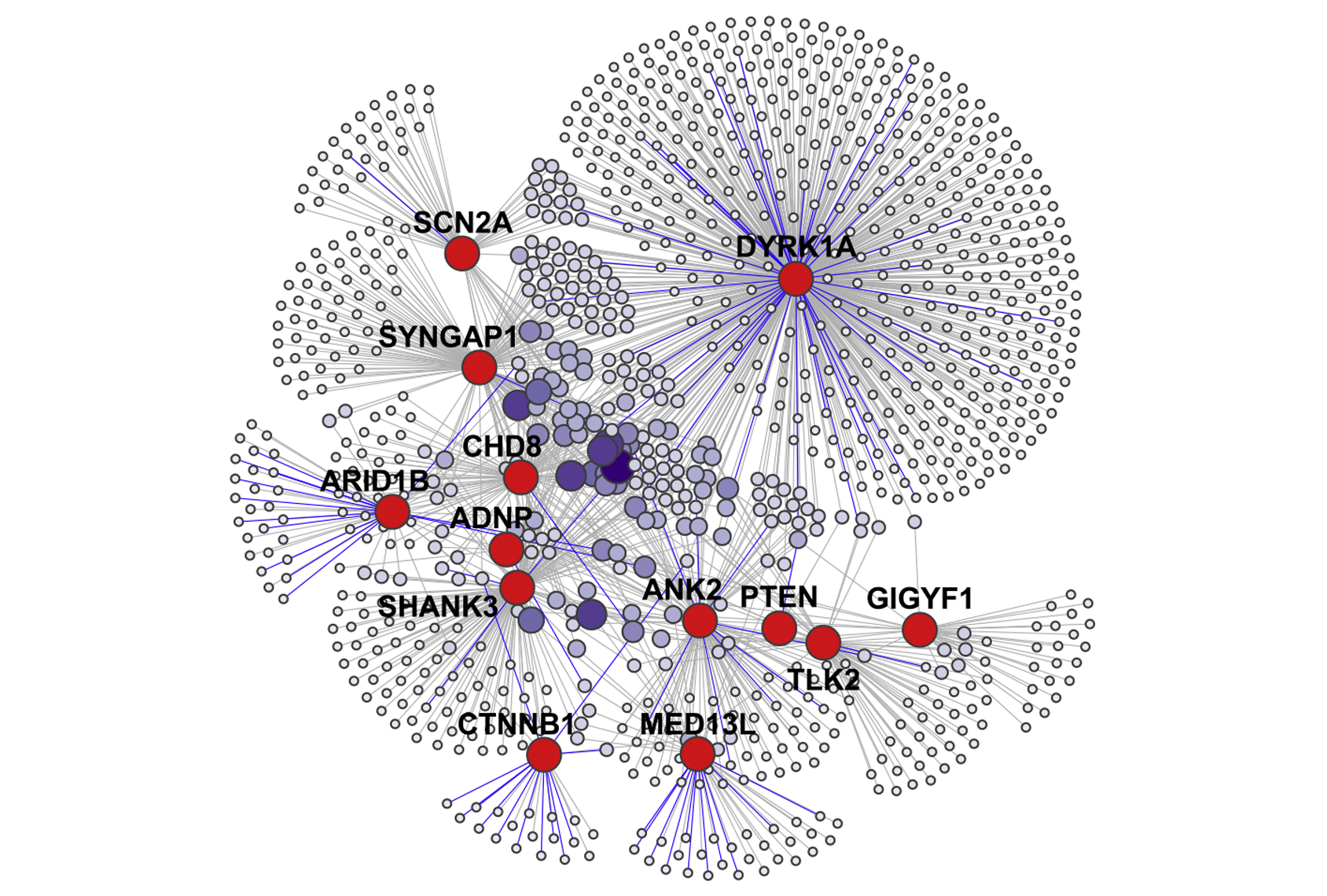A cellular complex that influences protein synthesis features prominently in a new map of the binding partners for 13 autism-linked proteins in excitatory neurons. The work may help researchers understand how autism-related proteins talk to one another and could point to new therapeutic targets, the team behind the work says.
The genetic architecture of autism is well documented, but the connections among proteins derived from autism-linked genes have been hazy, says Michael Ronemus, research assistant professor at Cold Spring Harbor Laboratory in New York, who was not involved in the study. Some catalogs of these proteins’ partners have used data from cancer cells, which don’t express neuronal proteins. Another relied on postmortem brain samples in which the jumble of cells — only some of which are implicated in autism — could have skewed the results.
In the new work, researchers turned to excitatory neurons, a key cell type that may go awry in autism. The team grew the neurons from human stem cells and used antibodies to fish out the proteins encoded by 13 autism-linked genes — including PTEN, ANK2 and SYNGAP1 — along with any proteins bound to them.
A mass spectrometry analysis uncovered 1,021 associations, more than 90 percent of which have not been previously described. A similar analysis involving proteins the team captured from postmortem human brain samples generated a comparable list of contacts, validating the results.
Discovering so many new companions is not surprising, says lead investigator Kasper Lage, managing director of the Novo Nordisk Foundation Center for Genomic Mechanisms of Disease at the Broad Institute in Cambridge, Massachusetts. “We’re fishing with a biochemical hook in a pond that no one has fished in before. You’re bound to find new things,” he says.
A
mong PTEN’s binding partners, for example, is AKAP8L, a component of the mTOR pathway — a finding that provides new leads for treating PTEN-linked autism, says Greta Pintacuda, study investigator and research scientist in Lage’s lab. “A couple of familial studies describe cases of deletion of the AKAP8L locus with macrocephaly, a very similar phenotype to people with a PTEN mutation,” she adds.
The giant isoform of ANK2, found only in neurons, hooks proteins that generate the axon — the long, thin part of the cell that conducts electrical impulses. This result validates past work suggesting that ANK2 regulates axonal development in mice, says Damaris Lorenzo, associate professor of cell and developmental biology at the University of Pennsylvania’s Perelman School of Medicine in Philadelphia, who led that study but was not involved in the new work.
Nine of the 13 autism-linked proteins interact with the same protein complex, called IGF2BP1-3, suggesting it is a key point of convergence. Mutations that disrupt those interactions could affect protein levels, Pintacuda says. The complex recognizes chemical tags called N6-methyladenosine (m6A) on mRNA and recruits other molecules to control the transcript’s stability and how much protein cells synthesize from it.
The findings were published on 24 January in Cell Genomics.
T
he paper “not only reveals a broader network but provides additional candidates for future studies and explorations,” says Hongjun Song, professor of neuroscience at the University of Pennsylvania, who was not involved in the work. The results point to post-transcriptional modification as a common mechanism in autism, says Song, whose group has detected m6A tags on transcripts for several autism-linked genes.But further work is needed to confirm the complex’s role in autism. It might just be that it binds to everything, Ronemus says. “I don’t know whether it’s really important here.”
The genes that encode the subunits of the IGF2BP1-3 complex have not previously turned up in sequencing studies of autism-linked mutations, probably because such mutations have severe effects, Lage says. “We found that two of the three subunits are intolerant to mutations, meaning you won’t survive very long if you have a mutation in this protein complex,” he says.
This finding highlights the fact that genes don’t necessarily have to carry a mutation to be linked to autism, says Dan Arking, professor of genetic medicine at Johns Hopkins University in Baltimore, Maryland. “It might just be that they don’t tolerate it. That doesn’t mean that the genes aren’t important in the actual phenotype,” he says.
The researchers plan to expand the network to include more autism-linked genes. So far, they have been limited by the availability of effective antibodies capable of fishing out proteins. Adding tags via CRISPR could help catch proteins that don’t have a good antibody hook — something the team is pursuing, Pintacuda says. They also plan to document protein interactions in other cell types, including inhibitory neurons. “Excitatory neurons are not the only cells relevant to autism,” she says.





